 Dustin Parker
Dustin ParkerThe creative process can serve may purposes, both functional and superficial. It can be a release, a means of financial gain, a voice for a poetic soul, an expression of opinion, and it goes on from there. The process itself may involve several steps from simple brush strokes to abrassive razor blades and paint scrappers putting the finishing touches on a complex piece. In the case of Kansas artist Dustin Parker, his creative process serves as a learning expirence, and with each piece he creates he takes another step in the journey towards perfection.
What is fascinating to me about Dustin's creative process is that it is mostly creation through destruction. Through out his website and artist statement and blog, you consistently see this quote from Picasso, "Every act of creation is first an act of destruction". Typically working in portraits, Dustin will paint a new piece in the traditional way, but the piece will not be finished until it is tortured. This process illustrates the temporary nature of art and it also detaches the artist from the creation. The slicing of or chipping away at the layers of paint on the canvas creates a compelling texture and a look of distress and trauma.
Recently, Dustin put down the blade a took to the keyboard to answer a few of my questions.
Orange Alert (OA): How would you describe your style of painting?
Dustin Parker (DP): My painting style is an amalgamation of abstract expressionistic elements and representational elements. I work in a painterly style reminiscent of figurative painters such as Jenny Saville, Tony Scherman, and Lucian Freud. However, my work is equally influenced by abstract painters such as Jasper Johns, Willem De Kooning, Robert Rauschenberg, Jean-Michel Basquiat and Jackson Pollock. The images are representational, but they are constructed with big expressive brush marks and rough impasto surfaces.
Dustin Parker (DP): My painting style is an amalgamation of abstract expressionistic elements and representational elements. I work in a painterly style reminiscent of figurative painters such as Jenny Saville, Tony Scherman, and Lucian Freud. However, my work is equally influenced by abstract painters such as Jasper Johns, Willem De Kooning, Robert Rauschenberg, Jean-Michel Basquiat and Jackson Pollock. The images are representational, but they are constructed with big expressive brush marks and rough impasto surfaces.
In my work, the representational image is often "deconstructed" or "destroyed" by removing large portions of the image using razor blades, paint scrappers, electric belt sanders, and various other tools. Or the image may be covered with drips, splatters, geometric shapes, patterns, typography, dry brush marks, or milky washes of color. This process may be repeated multiple times. A continuous cycle of construction and deconstruction, or addition and subtraction. I often refer to this process as the "destruction method."

OA: You tend to focus on the human face quite a bit in your work. What is the fascination with or the inspiration that lies within the faces?
DP: I originally started painting portraits in 2002 because I wanted to teach myself "how to paint," or more specifically how to paint in a more painterly and more representational style. Rembrandt acted as the impetus for that exploration. I really wanted to explore the idea of a modern day Rembrandt. How would Rembrandt paint if he were alive today? How would Pop Art and Abstract Expressionism influence someone like Rembrandt? That question sparked that initial exploration. 5 years later and I'm still exploring that concept. I'm still learning how to paint. I'm still struggling with it. I continue to paint that way because I still have much to learn. I haven't hit that game winning home run yet. I'm still trying to paint the perfect painting. And that creative journey is still rich with interesting scenery.
DP: I originally started painting portraits in 2002 because I wanted to teach myself "how to paint," or more specifically how to paint in a more painterly and more representational style. Rembrandt acted as the impetus for that exploration. I really wanted to explore the idea of a modern day Rembrandt. How would Rembrandt paint if he were alive today? How would Pop Art and Abstract Expressionism influence someone like Rembrandt? That question sparked that initial exploration. 5 years later and I'm still exploring that concept. I'm still learning how to paint. I'm still struggling with it. I continue to paint that way because I still have much to learn. I haven't hit that game winning home run yet. I'm still trying to paint the perfect painting. And that creative journey is still rich with interesting scenery.
I think my paintings are defined more by the way they are painted rather than the "subject" of the painting. The subject of the painting is irrelevant. I'm more concerned with exploring the possibilities of paint. I want to experiment with different methods of manipulating images and materials. I'm not really interested in being strictly an abstract painter, or strictly a realist painter. I'm more interested in exploring the tension and energy that exists between those two opposites. I want to mix oil and water, the abstract and the representational, and find the happy medium. I want to play the role of the abstract painter and the representational painter simultaneously. So the portrait becomes a natural default for me. The face is the perfect framework for what I do. Because no matter how much I manipulate the face, it never loses its impact. It never becomes boring. It is always identifiably human.
OA: Is there a different approach when working in the digital realm as opposed to the painting? Which media do you prefer to work in?
DP: They both follow the same aesthetic principles, they are stylistically very similar. The digital work is characterized by the same amalgamation of abstract and representational elements, and the same drips and scratches that my traditional paintings exhibit. I take the same approach to constructing and deconstructing the images. I build the image with pixels the same way I build them with paint. My goal is to create computer generated art that doesn't look computer generated. I want to create the illusion of paint dripping, and I want to create those effects entirely in the digital realm.
DP: They both follow the same aesthetic principles, they are stylistically very similar. The digital work is characterized by the same amalgamation of abstract and representational elements, and the same drips and scratches that my traditional paintings exhibit. I take the same approach to constructing and deconstructing the images. I build the image with pixels the same way I build them with paint. My goal is to create computer generated art that doesn't look computer generated. I want to create the illusion of paint dripping, and I want to create those effects entirely in the digital realm.
The main benefit of using the computer is speed and efficiency. The computer gives you 100% control over every aspect of the work. Every single action can be undone or replicated or repeated or reexamined with very little effort. The computer eliminates the possibility of making mistakes. The computer allows the artist to become a machine. The computer gives me the ability to react instantly to ideas. I can sit down in front of the computer and immediately start working, whereas painting requires time to gather and prepare materials. I don't have to wait for paint to dry. I can go straight to the action of making art. That probably explains why my computer generated art is more political. Because I can generate images with relatively little effort and that allows me to focus more attention on the message behind the piece.
Painting is the opposite. Paint is a wild animal. Paint is unpredictable. Paint is alive. Every action is permanent. You cannot undo a brushstroke. You can wipe it off, or paint over it, but that brushstroke will have a permanent effect on the painting. Every action will effect every proceeding action. Every brushstroke is an act of creation and destruction. You destroy one thing to create another thing. Your decisions have consequences. So painting becomes a collaboration between the artist and the materials. And that is why you see this amalgamation of abstract and representational elements, because my work is an exploration of this interaction between control and chaos.
I don't prefer one medium over the other. The only significant difference between the brush and the computer, is the motivation behind the creation of the artwork. The computer is a machine which allows me to create propaganda that explores various political and social concerns, whereas the brush allows me to connect with the physics of creation. The brush allows me to get my hands dirty and make a physical connection to something greater than myself. The brush is only concerned with the paint. The color of the paint and the texture of the paint. So the computer allows me to explore the analytical side of my creativity while the brush allows me to explore the more primal and instinctual side of my creative being.

OA: I really enjoy the piece you recently posted on your blog, "Red State Blue State". What is your opinion of the artists and musicians making political statements in their work? Is art meant to sway political opinion?
DP: "Red State Blue State" concerns the politics of nonvoting, and the general feeling that all politicians are corrupt and evil and greedy. The piece depicts twin devils, representing the Republican and Democratic parties. The devil is a symbol of evil, but the devil is also a very charismatic figure. The devil would most likely be a television personality or some other type of public figure. The devil is a trickster and he would manifest himself in a form that is non-threatening and extremely likable. The Devil, like the politician, has to fool the public to win the vote.
DP: "Red State Blue State" concerns the politics of nonvoting, and the general feeling that all politicians are corrupt and evil and greedy. The piece depicts twin devils, representing the Republican and Democratic parties. The devil is a symbol of evil, but the devil is also a very charismatic figure. The devil would most likely be a television personality or some other type of public figure. The devil is a trickster and he would manifest himself in a form that is non-threatening and extremely likable. The Devil, like the politician, has to fool the public to win the vote.
I used the phrase "Your vote counts" because most Americans feel the opposite, they believe that their vote is meaningless. They are powerless against the giant political beast. They are choosing a lesser evil. A blue devil or a red devil.
I've learned that you can't avoid politics. Everything in everyday living is political, and it is only natural that art is political, and that artists make overtly political statements. I'm not one to stand on the soapbox and complain about this and that. I'm more interested in creating images that confront people with questions. I'm not claiming to have answers. But I have plenty of questions, and my political work is about addressing those questions. Art should be the impetus for debate and critical thinking. The artist should create work that encourages creative thinking, revolutionary thinking. Good art gets people talking. Good art makes people ask more questions and seek answers. I don't want to force feed people my own opinions about religion or politics or sexuality or human nature or animal rights. I definitely have my own opinions about those issues, and my work reflects that world-view. But I constantly put those beliefs under the microscope and inspect them, and reexamine them. A piece like "Red State Blue State" is very critical of politicians but it is also an examination of my own attitude toward the democratic process and my options as a voter. I want potential voters to really dig deep and decide if voting really makes a difference. If voting is such a futile act, show me an action that makes a real difference. So the piece is critical of both sides of the issue.
OA: Who are some of your biggest literary influences?
DP: Chuck Palahniuk and the Holy Bible
DP: Chuck Palahniuk and the Holy Bible
OA: What's next for Dustin Parker?
DP: I am working on a new series of digital and traditional paintings for a possible solo show. I haven't set a date or approached any galleries about the show yet. I want to work without a deadline and see what happens. I'm considering "Create Destroy Repeat" as a possible title for the exhibit.
DP: I am working on a new series of digital and traditional paintings for a possible solo show. I haven't set a date or approached any galleries about the show yet. I want to work without a deadline and see what happens. I'm considering "Create Destroy Repeat" as a possible title for the exhibit.
I have been developing some ideas for some video projects that I would like to explore. I'm not sure if those experiments will manifest themselves as narratives or if they will simply be moving images set to music. I'm really drawn toward the idea of making a moving painting, and video seems like the perfect medium to achieve that effect. So that basic idea will probably govern the video projects I work on. They will definitely have a David Lynch quality to them. They will be very abstract.

Bonus Questions:
OA: Coffee? If yes, what is your favorite type of coffee and where is your favorite coffee spot?
DP: No, I hate the taste and smell of coffee.
DP: No, I hate the taste and smell of coffee.
OA: Do you listen to music while you work? Who are some of your favorites while working and in general?
DP: Yes, I can't work without music. My favorites include, The Smashing Pumpkins, Radiohead, Nine Inch Nails, Muse, David Bowie, The Pixies, Sonic Youth, Nirvana, Marilyn Manson, The Flaming Lips, The Yeah Yeah Yeahs, Led Zeppelin, Explosions In The Sky, Modest Mouse, Bjork, Tool, Beck, and many many others.
DP: Yes, I can't work without music. My favorites include, The Smashing Pumpkins, Radiohead, Nine Inch Nails, Muse, David Bowie, The Pixies, Sonic Youth, Nirvana, Marilyn Manson, The Flaming Lips, The Yeah Yeah Yeahs, Led Zeppelin, Explosions In The Sky, Modest Mouse, Bjork, Tool, Beck, and many many others.
I imagine this is how Dustin Parker sees the world.
For more information Dustin Parker please visit website or his myspace page. You can also check out some of his work in the latest issue of and on the cover of CRU A magazine.
+by+Nick+Volkert).jpg)
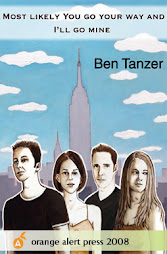

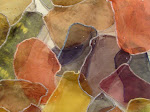









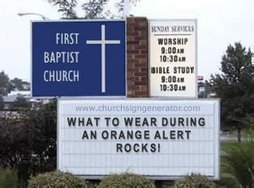


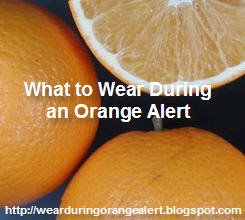


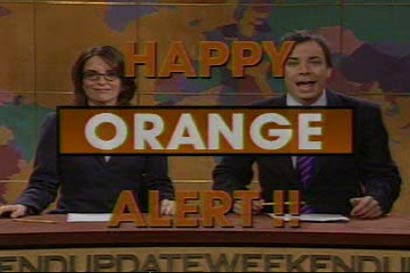


No comments:
Post a Comment